As the ‘Ber’ months roll in, the Philippines, a country known for its vibrant culture and deep-rooted traditions, gears up for a Christmas celebration like no other. Stretching from September to January, Filipino Christmas is a splendid mosaic of faith, joy, and kinship. With this in mind, we’ll take you on a journey through the Philippines’ unique Christmas traditions, uncovering the beauty and depth of these customs. Let’s go!
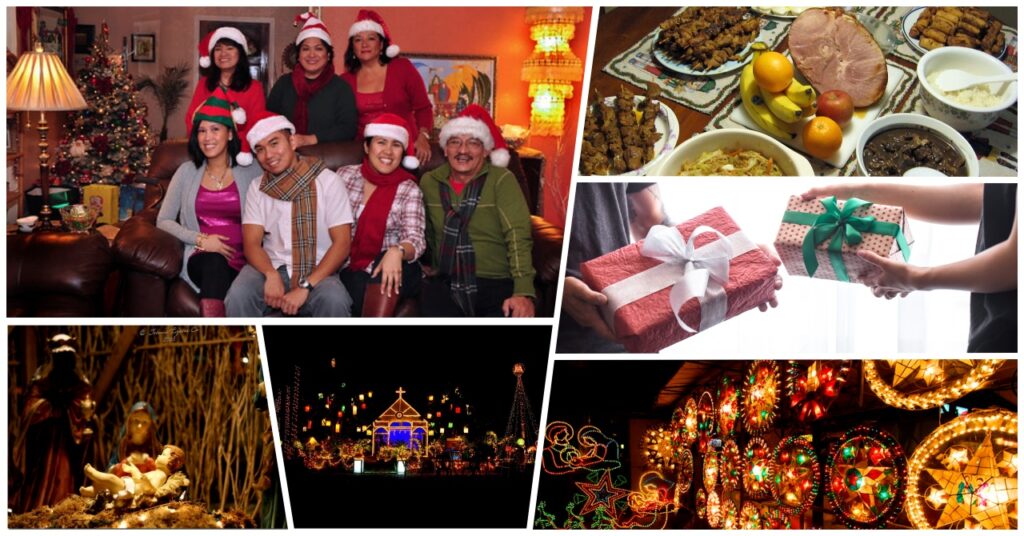
1. The Extended Yuletide Season
The Early Start: Unlike anywhere else in the world, Christmas in the Philippines begins in September. This extended festive period is not just a celebration but a reflection of the Filipinos’ enduring spirit and joyous outlook on life. The early start signifies an eagerness to embrace the warmth and goodwill that the season brings.
And with this, popular Filipino Christmas “icons” come into front and center. Check out these funny features, especially the dates they were published in 2023.
And another one…
Talk about sharing the Filipino Christmas cheer (humor), right?
2. Belen: The Heart of Filipino Christmas

Nativity Scenes Everywhere: The Belen, a depiction of the nativity scene, is a central element in Filipino Christmas decor. You’ll find these intricate displays not just in churches but in homes, schools, and even in public squares. Each Belen is a creative masterpiece, showcasing the artistic flair and religious devotion of the Filipino people.
3. The Parol: A Symbol of Hope and Light
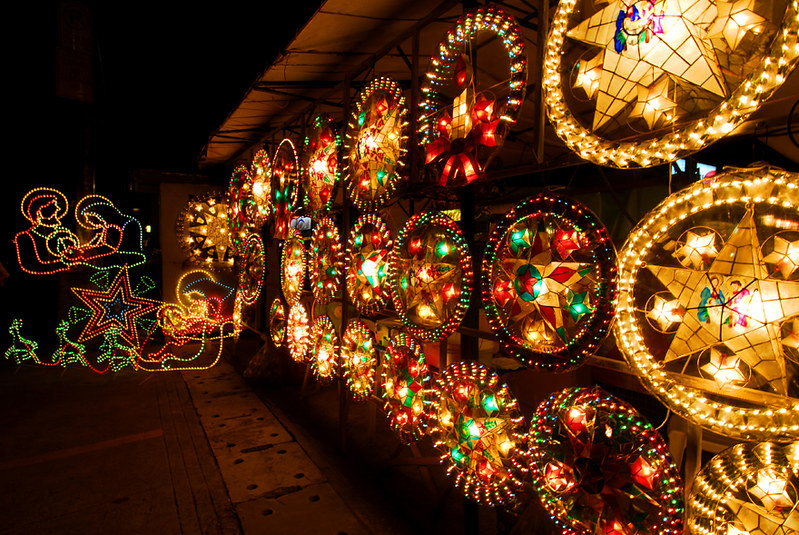
Illuminating Filipino Nights: The parol, a star-shaped lantern, is an iconic Christmas emblem in the Philippines. Originally used to light the way to church for Simbang Gabi, these lanterns now adorn homes and streets, symbolizing the Star of Bethlehem. The diverse designs of parols, from simple bamboo frames to elaborate capiz shells, reflect the innovative spirit of Filipinos.
4. Simbang Gabi: A Nine-Day Spiritual Journey
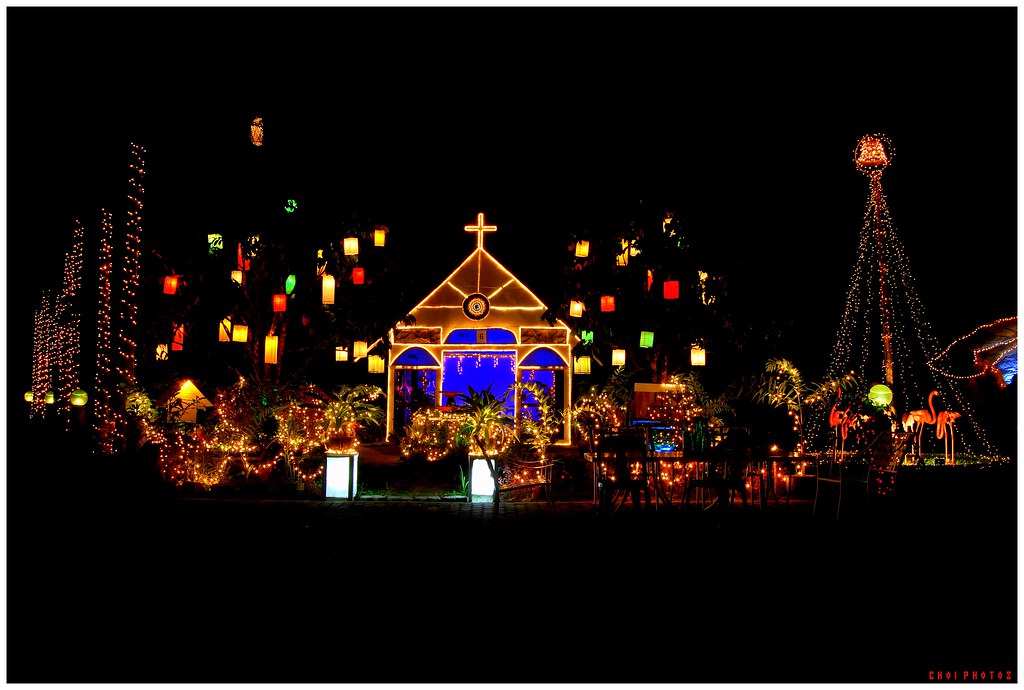
Dawn Masses and Wishes: Simbang Gabi is a series of nine dawn or night masses leading up to Christmas Day, deeply ingrained in Filipino Christmas tradition. This practice is not only a religious observance but also carries a popular belief that completing all nine masses grants a wish. It’s a spiritual journey that brings communities together in faith.
5. A Feast for the Senses: Christmas Cuisine
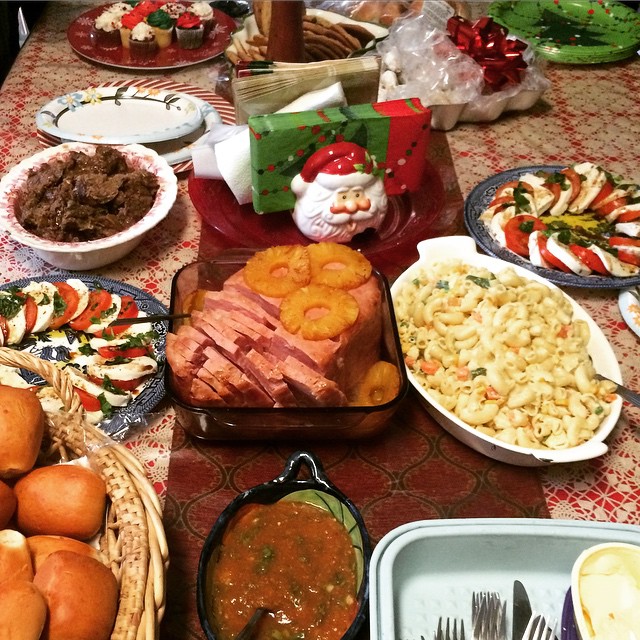
Bibingka and Puto Bumbong: No Simbang Gabi is complete without indulging in traditional Christmas treats like bibingka and puto bumbong. These delicacies, unique to Filipino cuisine, are more than just food; they are a celebration of culture and a testament to the Filipinos’ love for communal feasting.
6. Caroling: A Joyful Filipino Expression
Songs of Merriment: Caroling in the Philippines is a delightful affair. It’s less about vocal perfection and more about community and fun. With improvised instruments and often humorous lyrics, Filipino caroling is a testament to the country’s festive spirit and creativity.
If you were raised in the Philippines and have celebrated Christmas there in the past, you know that this isn’t too far from reality. This just goes to show two things: pure Filipino talent and their love for singing Christmas carols.
7. Misa de Gallo: The Midnight Mass
A Night of Reflection and Joy: Misa de Gallo, the midnight mass on Christmas Eve, is a pivotal part of Filipino Christmas. It’s a time of spiritual reflection, joyous celebration, and a manifestation of the Filipinos’ deep Catholic faith.
And if you’re wondering…
Misa de Gallo and Simbang Gabi are both significant religious traditions in the Philippines during the Christmas season, but they differ in timing and specific cultural significance.
Simbang Gabi:
- Timing: Simbang Gabi consists of a series of nine dawn masses, typically starting on December 16th and ending on December 24th. These masses are held early in the morning, often before sunrise.
- Cultural Significance: Simbang Gabi is a devotional nine-day series of masses that anticipates the birth of Jesus. It’s deeply embedded in Filipino culture as a time of spiritual preparation for Christmas.
- Community Aspect: These masses draw people together in the early hours, fostering a sense of community and shared anticipation of Christmas.
- Belief and Tradition: There’s a popular belief that completing all nine masses of Simbang Gabi will lead to a granted wish. It’s a mix of religious devotion and cultural superstition.
- Associated Customs: Following the masses, it’s common for attendees to enjoy traditional Filipino Christmas treats like bibingka and puto bumbong, which are sold outside churches.
Misa de Gallo:
- Timing: Misa de Gallo is specifically the midnight mass held on Christmas Eve, marking the culmination of the Advent season.
- Cultural Significance: This mass is a celebration of the actual birth of Jesus. It’s a time of joy and thanksgiving, reflecting on the deeper meaning of Christmas.
- Solemnity and Celebration: While still communal, Misa de Gallo has a more solemn and reflective nature, as it’s the time when Christmas officially begins. It’s a mix of solemn reflection and celebratory anticipation.
- Unique Practices: Misa de Gallo often includes special elements like candle lighting, live nativity scenes, and sometimes, re-enactments of the nativity story.
- Noche Buena: Following Misa de Gallo, families typically gather for the Noche Buena feast, a significant family meal that welcomes Christmas Day.
8. Family Reunions: The Essence of Filipino Christmas
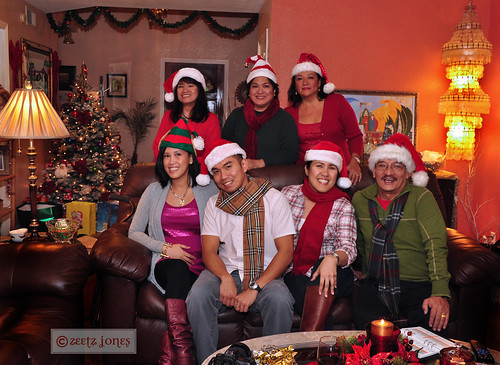
Bonding Over Feasts: The Philippine Christmas season is synonymous with grand family reunions. These gatherings are not just about enjoying lavish feasts but are a celebration of familial bonds and shared heritage. They reinforce the strong family ties that are a cornerstone of Filipino culture.
9. Noche Buena: A Midnight Culinary Tradition
Welcoming Christmas Day: As the clock strikes midnight on Christmas Eve, families gather for Noche Buena, a feast that is as much about togetherness as it is about food. This tradition underscores the importance of family in Filipino culture and the joy of shared experiences.
10. Monito-Monita: A Unique Gift Exchange
Gifts with a Musical Twist: In the spirit of Monito-Monita, a cherished Filipino Christmas gift exchange tradition, finding the perfect gift becomes a delightful challenge. This tradition, infused with fun, music, and guessing games, brings joy not just in the giving but in the playful reveal. To guide you in selecting a gift that resonates with this festive spirit, here’s a list of popular and thoughtful Christmas gift ideas:
- Eco-friendly Personal Items: With a growing awareness of sustainability, gifts like bamboo toothbrushes, reusable shopping bags, or biodegradable phone cases are both thoughtful and environmentally friendly.
- Customized Keepsakes: Personalized gifts such as engraved keychains, monogrammed notebooks, or custom-made jewelry add a special touch, showing thoughtfulness and care in your choice.
- Local Artisan Crafts: Supporting local artisans by gifting handmade crafts, such as woven baskets, traditional Filipino fabrics, or hand-painted mugs, not only offers a unique gift but also helps sustain local communities.
- Wellness Products: In a year where health has been paramount, wellness gifts like essential oil diffusers, yoga mats, or herbal tea assortments offer a touch of relaxation and self-care.
- Books by Filipino Authors: For book lovers, novels or poetry collections by Filipino authors can be a wonderful way to celebrate local literature and culture.
- Tech Accessories: Practical yet trendy tech accessories, like wireless earbuds, portable chargers, or stylish phone cases, are perfect for tech-savvy individuals.
- DIY Kits: For those who love crafting, DIY kits such as soap-making, candle crafting, or baking sets offer a fun and engaging experience.
- Experience Vouchers: Gifting an experience, like a spa day, a cooking class, or a virtual concert ticket, can create memorable moments that last beyond the holiday season.
- Plant Kits: For burgeoning gardeners, a plant kit with seeds, pots, and gardening tools can be a gift that grows, literally!
- Filipino Snack Boxes: A box filled with a variety of Filipino snacks and delicacies can be a delightful treat, especially for those who appreciate the rich flavors of the Philippines.
Each of these gifts carries the warmth and joy of the season, embodying the essence of Monito-Monita – a tradition that is not just about the exchange of presents, but about the exchange of love, laughter, and the joy of giving.
11. Aguinaldo: The Joy of Giving
Gifts of Love and Blessing: Aguinaldo refers to the practice of giving Christmas money, often in red envelopes, to children by their elders and godparents. This tradition is a symbol of generosity and the value Filipinos place on nurturing the younger generation.
12. Embracing Modernity: Livestreamed Masses
Faith in the Digital Age: Adapting to modern times, livestreamed Christmas masses have become a part of Filipino Christmas. This innovation ensures that even those far from home can participate in the communal expression of faith.
13. Media Noche: Ringing in the New Year
A Feast of Good Fortune: Media Noche is the feast on New Year’s Eve, marked by round-shaped foods symbolizing prosperity. This tradition is a blend of cultural beliefs and the festive Filipino spirit, celebrating hope and new beginnings.
14. Concluding with the Feast of the Three Kings
The Grand Finale: The Christmas season officially concludes with the Feast of the Three Kings in January. This celebration not only marks the end of the season but also reflects the enduring nature of Filipino Christmas traditions.
Video: Paskong Pinoy in the US? What Overseas Filipinos Miss About Christmas in the Philippines
Now that we’ve gone through some of the biggest traditions Filipinos observe around Christmastime in the country, let’s take a look from a different perspective this time – from OFWs who are so familiar with these traditions, but have since, or perhaps up until now, celebrated Christmases away from their home country. Let’s find out what these OFWs in the US miss about Filipino Christmas the most.
Frequently Asked Questions
1. Why does the Philippines start celebrating Christmas in September?
Filipino Christmas celebrations begin in September primarily due to cultural enthusiasm and deep-rooted Catholic faith. This extended festive period, starting from the ‘Ber’ months (September) reflects the Filipinos’ eager anticipation and joyous spirit towards the holiday season.
2. What is the significance of the parol in Filipino Christmas?
The parol, a star-shaped lantern, is a distinctive symbol of Christmas in the Philippines. It represents the Star of Bethlehem and symbolizes hope and guidance. Originally used to light paths to churches for Simbang Gabi, it has become a widespread decorative item, reflecting Filipino creativity and festive spirit.
3. Can non-Filipinos participate in Simbang Gabi?
Absolutely! Simbang Gabi is open to everyone, regardless of nationality. Non-Filipinos are welcome to join these dawn masses to experience the spiritual and cultural aspects of the Filipino Christmas.
4. What are typical foods served during Noche Buena in the Philippines?
Noche Buena, the Christmas Eve feast, typically includes dishes like lechon (roast pig), queso de bola (edam cheese), Hamon (Christmas ham), spaghetti, and fruit salad. These dishes reflect a blend of Filipino tastes and Spanish influences.
5. How is caroling different in the Philippines compared to other countries?
In the Philippines, caroling is a lighthearted and communal activity, often featuring improvised instruments and playful lyrics. Unlike the formal caroling traditions in many Western countries, Filipino caroling is more about community engagement and fun than musical perfection.
6. What is Monito-Monita?
Monito-Monita is a Filipino Christmas gift exchange tradition, similar to Secret Santa. It involves a fun twist where participants sing and play guessing games to reveal to whom they’re giving their gift. This tradition adds a personal and interactive element to gift-giving.
7. Is it common for Filipinos abroad to celebrate these traditions?
Yes, many Filipinos abroad continue to celebrate these traditions to stay connected to their roots and culture. Practices like setting up a Belen, making parols, and participating in Simbang Gabi (sometimes virtually) are common among the Filipino diaspora.
8. What happens during the Feast of the Three Kings in the Philippines?
The Feast of the Three Kings, celebrated on the first Sunday of January, marks the official end of the Christmas season in the Philippines. It commemorates the visit of the Three Wise Men to baby Jesus and is often observed with special church services and sometimes, gift-giving to children, symbolizing the gifts given by the Wise Men.
Summary
In the Philippines, Christmas is more than just a holiday; it’s a vivid celebration of life, faith, and community. Each tradition, from the Belen to Noche Buena, weaves a story of a people deeply connected to their faith, their culture, and each other. Filipino Christmas traditions are a rich tapestry of communal joy, spiritual devotion, and familial love, making the season uniquely festive and heartwarming.
As we explore these traditions, we’re reminded of the universal values of togetherness, joy, and resilience – values that make the Filipino Christmas a truly magical experience.
READ NEXT: 3 Touching OFW Christmas Videos by Century Properties
